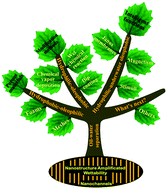当前位置:
X-MOL 学术
›
Nanoscale Horiz.
›
论文详情
Our official English website, www.x-mol.net, welcomes your
feedback! (Note: you will need to create a separate account there.)
Rational design of materials interface at nanoscale towards intelligent oil–water separation
Nanoscale Horizons ( IF 8.0 ) Pub Date : 2018-01-04 00:00:00 , DOI: 10.1039/c7nh00185a Mingzheng Ge 1, 2, 3, 4, 5 , Chunyan Cao 1, 2, 3, 4, 5 , Jianying Huang 1, 2, 3, 4, 5 , Xinnan Zhang 1, 2, 3, 4, 5 , Yuxin Tang 6, 7, 8 , Xinran Zhou 6, 7, 8 , Keqin Zhang 1, 2, 3, 4, 5 , Zhong Chen 6, 7, 8 , Yuekun Lai 1, 2, 3, 4, 5
Nanoscale Horizons ( IF 8.0 ) Pub Date : 2018-01-04 00:00:00 , DOI: 10.1039/c7nh00185a Mingzheng Ge 1, 2, 3, 4, 5 , Chunyan Cao 1, 2, 3, 4, 5 , Jianying Huang 1, 2, 3, 4, 5 , Xinnan Zhang 1, 2, 3, 4, 5 , Yuxin Tang 6, 7, 8 , Xinran Zhou 6, 7, 8 , Keqin Zhang 1, 2, 3, 4, 5 , Zhong Chen 6, 7, 8 , Yuekun Lai 1, 2, 3, 4, 5
Affiliation

|
Oil–water separation is critical for the water treatment of oily wastewater or oil-spill accidents. The oil contamination in water not only induces severe water pollution but also threatens human beings’ health and all living species in the ecological system. To address this challenge, different nanoscale fabrication methods have been applied for endowing biomimetic porous materials, which provide a promising solution for oily-water remediation. In this review, we present the state-of-the-art developments in the rational design of materials interface with special wettability for the intelligent separation of immiscible/emulsified oil–water mixtures. A mechanistic understanding of oil–water separation is firstly described, followed by a summary of separation solutions for traditional oil–water mixtures and special oil–water emulsions enabled by self-amplified wettability due to nanostructures. Guided by the basic theory, the rational design of interfaces of various porous materials at nanoscale with special wettability towards superhydrophobicity–superoleophilicity, superhydrophilicity–superoleophobicity, and superhydrophilicity–underwater superoleophobicity is discussed in detail. Although the above nanoscale fabrication strategies are able to address most of the current challenges, intelligent superwetting materials developed to meet special oil–water separation demands and to further promote the separation efficiency are also reviewed for various special application demands. Finally, challenges and future perspectives in the development of more efficient oil–water separation materials and devices by nanoscale control are provided. It is expected that the biomimetic porous materials with nanoscale interface engineering will overcome the current challenges of oil–water emulsion separation, realizing their practical applications in the near future with continuous efforts in this field.
中文翻译:

合理设计纳米级材料接口,实现智能油水分离
油水分离对于含油废水或溢油事故的水处理至关重要。水中的油污染不仅会造成严重的水污染,而且还会威胁人类的健康以及生态系统中的所有生物。为了应对这一挑战,已将不同的纳米级制造方法应用于赋予仿生多孔材料的特性,这为油水修复提供了有希望的解决方案。在这篇综述中,我们介绍了合理设计的材料界面的最新发展以及特殊的可润湿性,可智能地分离不混溶/乳化的油水混合物。首先描述了对油水分离的机械理解,其次是对传统油水混合物和特殊油水乳液的分离解决方案的总结,这些分离技术由于纳米结构而具有自放大的润湿性。在基本理论的指导下,详细讨论了各种多孔材料在纳米级的界面的合理设计,这些界面具有对超疏水性-超亲油性,超亲水性-超疏油性和超亲水性-水下超疏油性的特殊润湿性。尽管上述纳米级制造策略能够解决当前的大多数挑战,但为满足各种特殊应用需求,还审查了为满足特殊的油水分离要求并进一步提高分离效率而开发的智能超湿材料。最后,提供了通过纳米级控制开发更高效的油水分离材料和设备的挑战和未来前景。预计具有纳米级界面工程的仿生多孔材料将克服油水乳液分离的当前挑战,并通过在该领域的不断努力在不久的将来实现其实际应用。
更新日期:2018-01-04
中文翻译:

合理设计纳米级材料接口,实现智能油水分离
油水分离对于含油废水或溢油事故的水处理至关重要。水中的油污染不仅会造成严重的水污染,而且还会威胁人类的健康以及生态系统中的所有生物。为了应对这一挑战,已将不同的纳米级制造方法应用于赋予仿生多孔材料的特性,这为油水修复提供了有希望的解决方案。在这篇综述中,我们介绍了合理设计的材料界面的最新发展以及特殊的可润湿性,可智能地分离不混溶/乳化的油水混合物。首先描述了对油水分离的机械理解,其次是对传统油水混合物和特殊油水乳液的分离解决方案的总结,这些分离技术由于纳米结构而具有自放大的润湿性。在基本理论的指导下,详细讨论了各种多孔材料在纳米级的界面的合理设计,这些界面具有对超疏水性-超亲油性,超亲水性-超疏油性和超亲水性-水下超疏油性的特殊润湿性。尽管上述纳米级制造策略能够解决当前的大多数挑战,但为满足各种特殊应用需求,还审查了为满足特殊的油水分离要求并进一步提高分离效率而开发的智能超湿材料。最后,提供了通过纳米级控制开发更高效的油水分离材料和设备的挑战和未来前景。预计具有纳米级界面工程的仿生多孔材料将克服油水乳液分离的当前挑战,并通过在该领域的不断努力在不久的将来实现其实际应用。











































 京公网安备 11010802027423号
京公网安备 11010802027423号